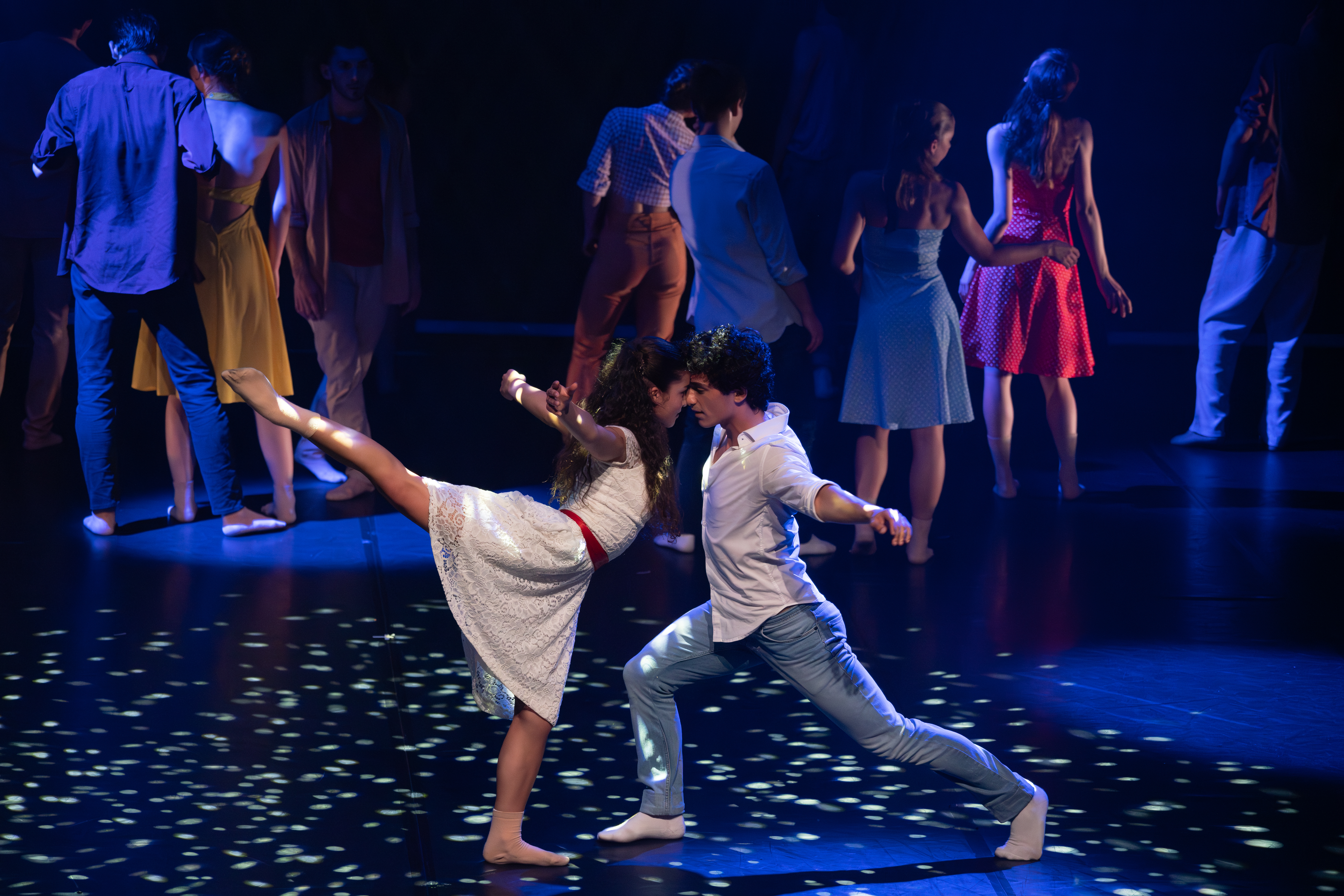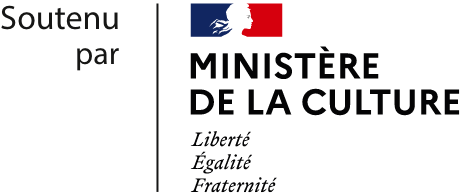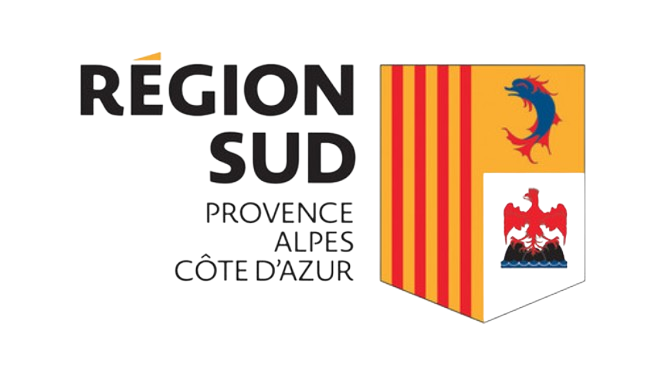RePERTOIRE 21-22
The repertoire of the Cannes Junior Ballet blends ballets from the great ballet repertoire, creations by emerging choreographers, and reprises or creations by recognised choreographers. It is revisited every year to introduce novelty and enrich the knowledge of our young dancers.
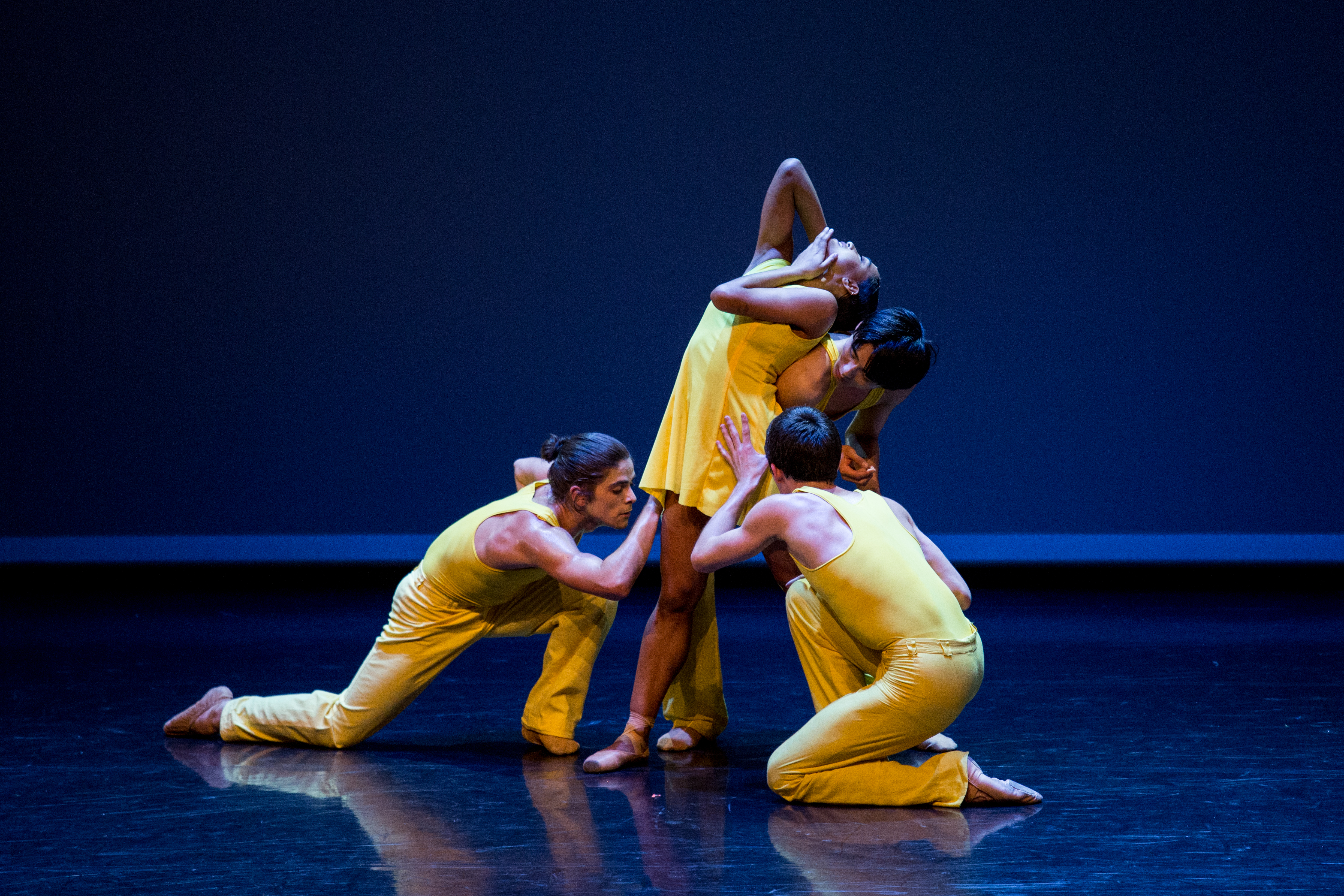
OPUS 40
Choreography: Jean-Christophe Maillot
Music: Meredith Monk
Revival of repertoire created in 2000
Duration: 20 mn
20 dancers
In Opus 40, created in April 2000, Jean-Christophe Maillot returned to more intimate work in the vein of ballets such as Dov'é la Luna and Vers un Pays Sage.
He continues to explore his own choreographic vocabulary, which he develops in the informal world of the American painter George Condo to the experimental music of Meredith Monk.
"The sophisticated writing, the bitter-sweet interplay between the couples, and the sudden interruption of the work, while one couple is still dancing, give the feeling of a piece cut out of the material of time that is slipping away".
Les Saisons de la Danse - June 2000 - Philippe Verrièle
Photo: Sakher Almonem
IT'S ALRIGHT
Choreography: Carolyn Carlson
Music: René Aubry
Created in September 2021 for the Cannes Jeune Ballet Rosella Hightower
Duration: 04 mn
3 dancers
"It was an honour to work with the talented dancers of Cannes Jeune Ballet Rosella Hightower. The creation of 'It's Alright', accompanied by the lively music and text of René Aubry, inspired the spontaneous, enthusiastic and energetic choreography of three men, discovering creative ideas to infuse this dance with inventive movement that they found through my ideas. Our collaboration was a joyous experience for these talented young artists. It was a great pleasure for me to see the result of this creation."
Carolyn Carlson
Photo: Sakher Almonem
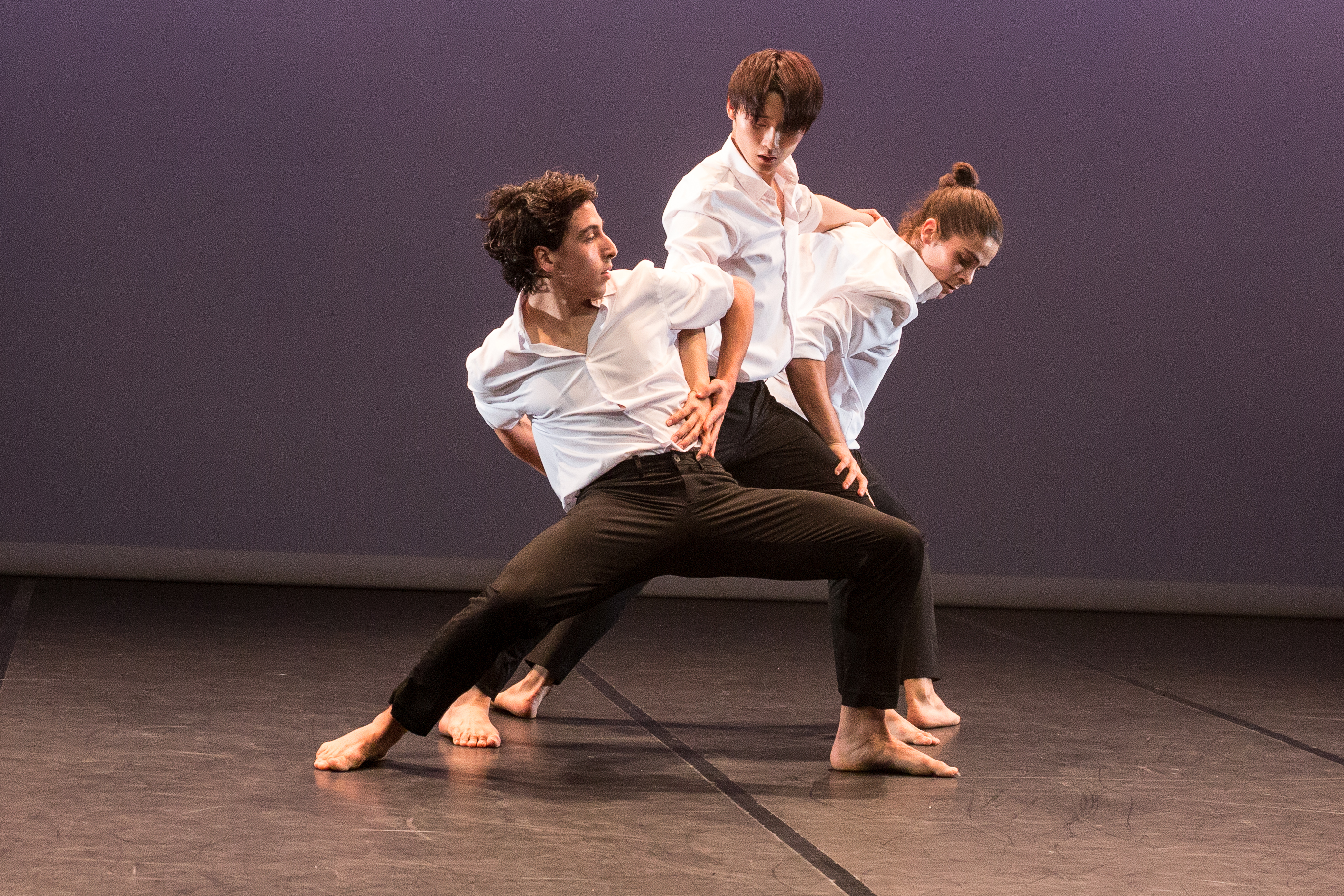
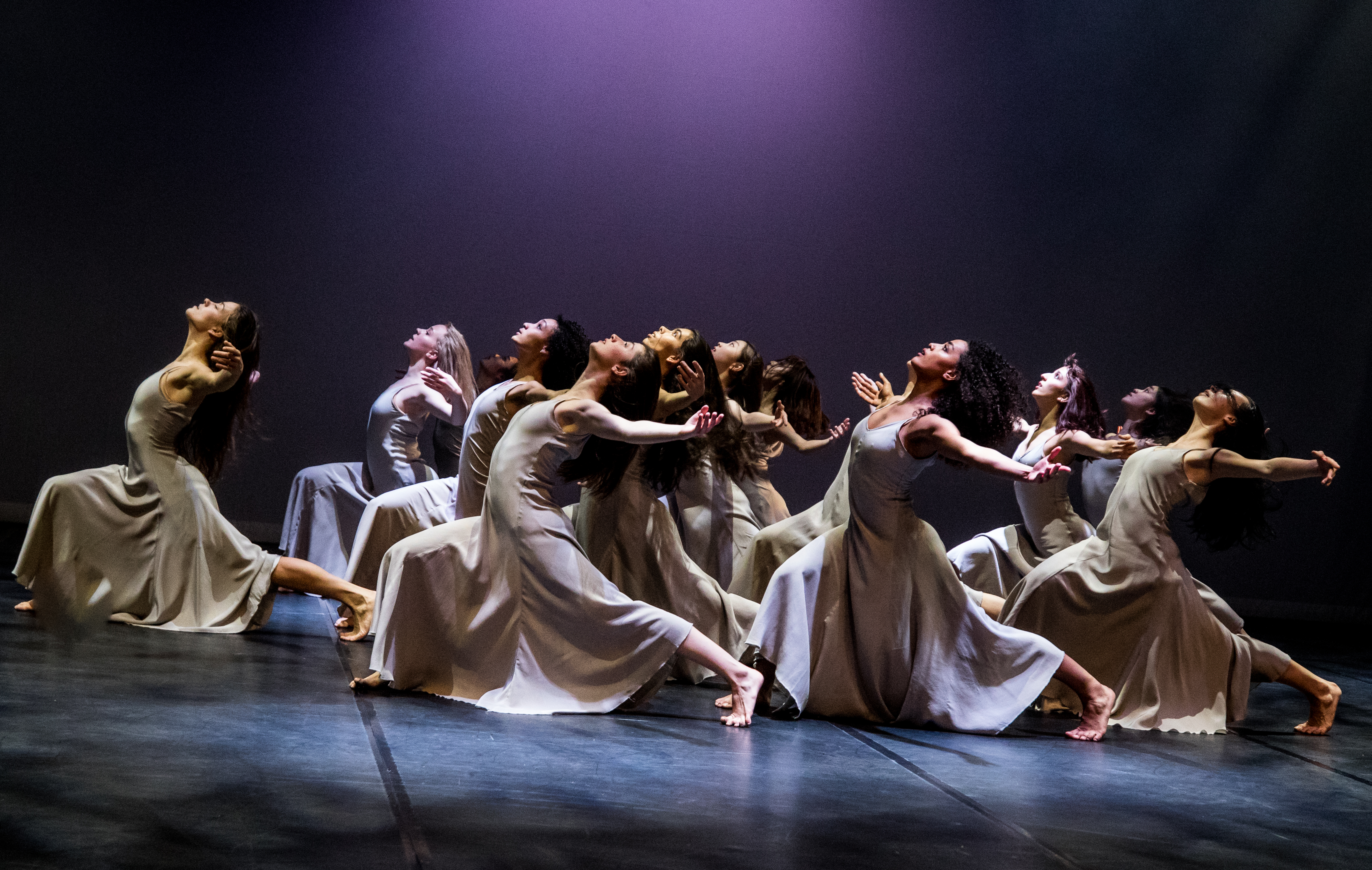
WIND WOMEN
Choreography: Carolyn Carlson
Music: Nicolas de Zorzi
Solo created in 2011, variation created in 2018, revival for Cannes Jeune Ballet in 2021
Duration: 20 mn
6 dancers
With Wind women, Carolyn Carlson has chosen to explore the feeling of transience. With Céline Maufroid, who has been performing her work for several years, she listened to the breaths that envelop us and those that emanate from within us.
Every living being, through its breathing, represents a machine for creating wind. Wind Women is an invitation to everyone to listen and feel the breath of the world and of their own soul.
Photo: Sakher Almonem
MOZART A 2 (EXTRACTS)
Choreography: Thierry Malandain
Music: Wolfgang Amadeus Mozart
Revival of repertoire created in 1997
Duration: 11 mn
4 dancers
In 1997, a few pages from Mozart's piano concertos were used to create the duets for a show entitled Bal Solitude. The idea was to portray episodes of love in the context of a ball. It's a festive place, but one that reveals the loneliness that comes when love doesn't always go hand in hand. It is this changing face of a feeling that is sometimes measured by the extent of the lack that the play addresses.
"My culture is that of classical ballet, and I have no qualms about remaining attached to it. Although I readily admit that its artistic and social codes are from another era, I also believe that this material, inherited from four centuries of history, provides the dancer with invaluable resources. So I play around with it, becoming classical for some, contemporary for others, simply in search of a dance that I love. A dance that doesn't just leave a trace of pleasure, but that reconnects with the essence of the sacred as a response to the difficulty of being."
Thierry Malandain
Photo: Sakher Almonem
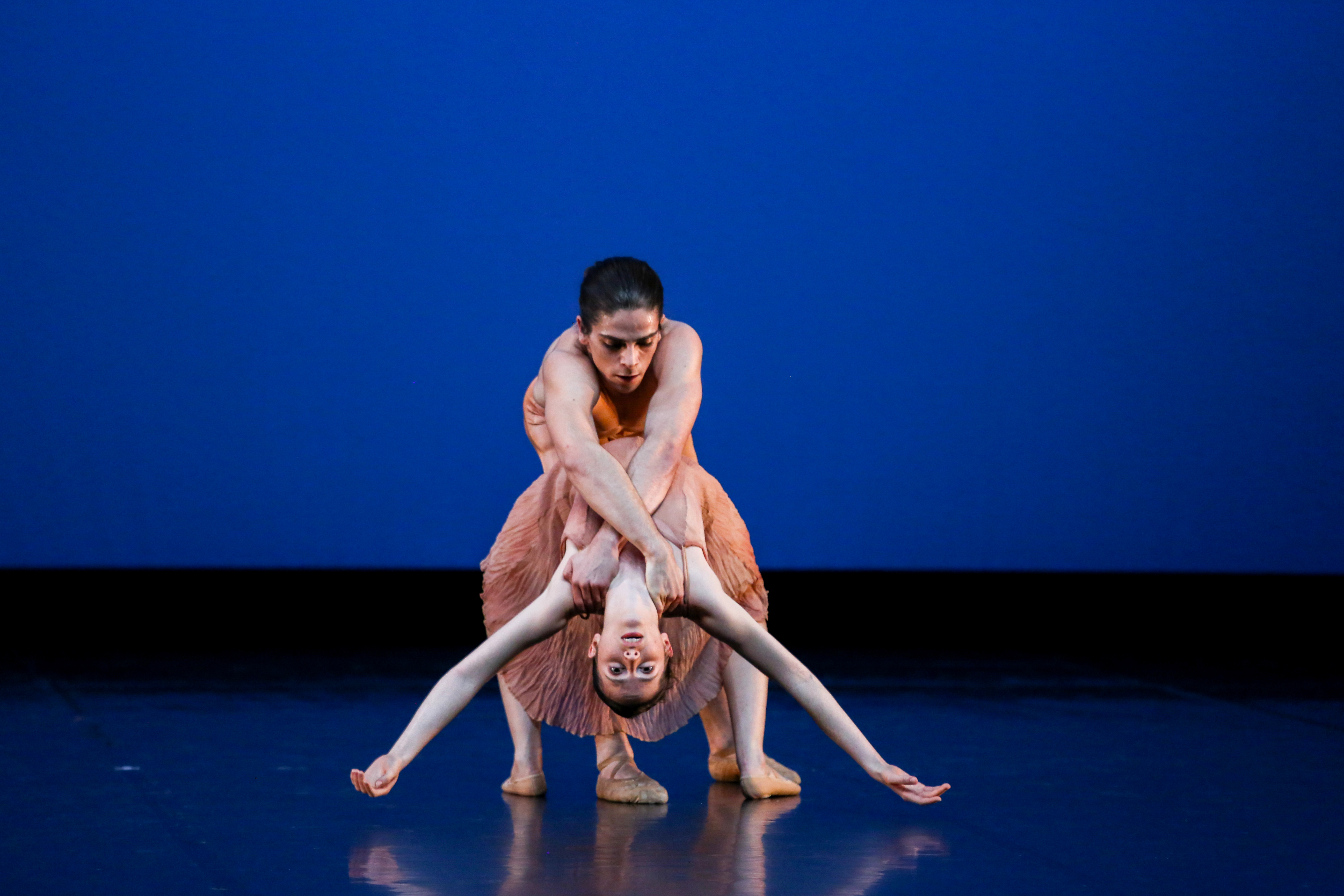
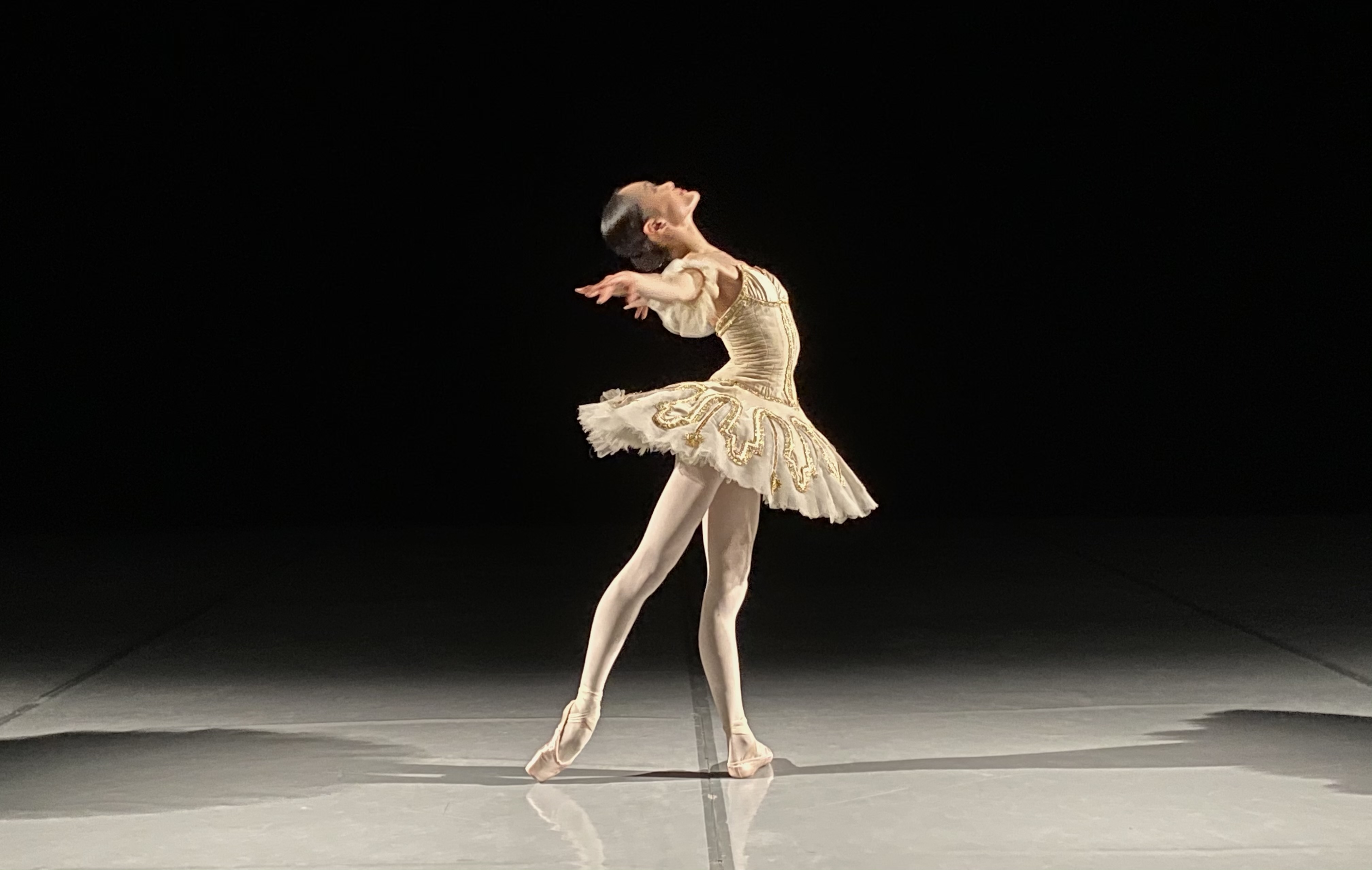
PAQUITA (EXTRACTS)
Choreography after Marius Petipa
Music: Édouard Deldevez
Revival from 1881
Duration: 7 mn
6 dancers
Paquita is a ballet in 2 acts and 3 tableaux by Joseph Mazilier and Paul Foucher, with music by Édouard Deldevez. It premiered at the Paris Opéra on 1 April 1846, with Carlotta Grisi and Lucien Petipa in the lead roles. The plot takes place in picturesque nineteenth-century Spain. The Spanish subject glorifies the military campaigns of the First Empire and echoes the sensibilities of the time, marked by the travels of French painters and writers to Spain.
Breaking away from the dreamlike themes of the ballet blanc, Paquita enjoyed considerable success thanks to the brilliance of its performers and the many Spanish dances that make up the ballet. It was revived several times, notably by Marius Petipa for the Bolshoi Kamenny Theatre in 1847.
The Cannes Jeune Ballet Rosella Hightower presents an adaptation of the famous Pas de trois.
Photo: Francesco Curci
WEST SIDE STORY
Choreography: Francesco Curci
Music: Leonard Bernstein
First performed on Broadway in 1957, revived for the Rosella Hightower PNSD in 2021
Duration: 60 mn
Keeping at the heart of Arthur Laurents original story (inspired by William Shakespeare's tragedy Romeo and Juliet) Francesco Curci finds the challenge in a new interpretation by mixing musical styles, reinterpreting the roles of the characters and giving a contemporary choreographic reading. The creative process is guided by the desire to encourage the audience to think more deeply about sensitive and topical themes such as discrimination, conflicts between cultures and beliefs, the need to belong, fear of rejection, oppression, the stereotype of women, the search for freedom and acceptance of others...
Stylistically, the choreographer adopts his own contemporary language throughout the work. Physical research is a priority in this creation. It is guided by the different themes addressed in the story. The "states of the body" and the dance develop from the emotions and trials experienced by the protagonists: moments of lightness and gaiety alternate with other, much darker and tortured feelings. The choreographer plays with the chiaroscuro between perfect cohesion or contrast between dance and music. The aim is to illustrate both the joy, euphoria and elation or the sadness, nostalgia, fear, despair and grief that death brings with it. Does the sacrifice of one person's life open the door to tolerance for others?
Photo: Patrick Massabo
